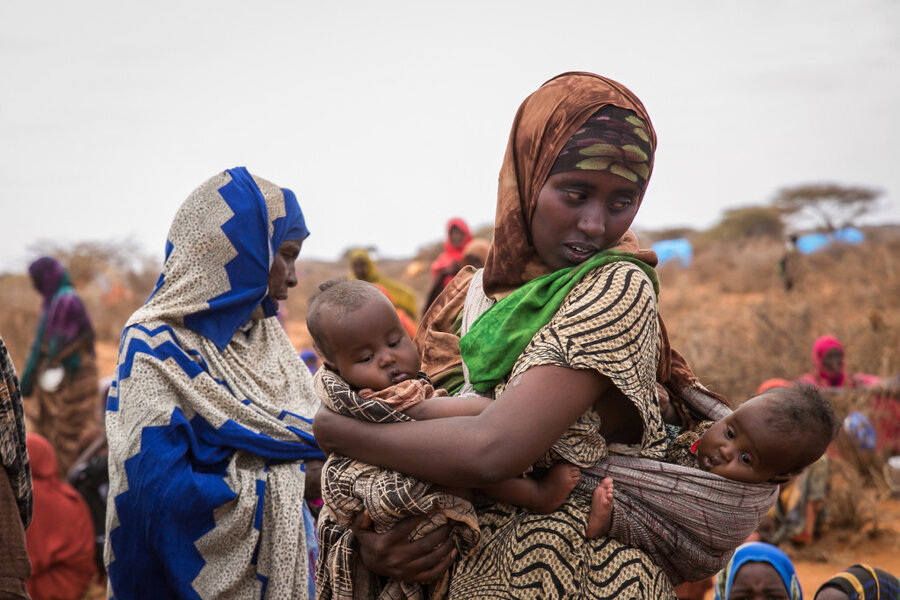The bounty that heads off famine
Loading...
With more than 20 million people at risk of famine, or what is called the worst humanitarian crisis since World War II, a Monitor series this week looks at some of the successes in avoiding famine. The focus is on the peasant farmers of Eastern Africa, the epicenter of a drought-fueled hunger crisis. More deeply, the articles probe what it means to build “resilience” among people in dealing with a disaster.
Resilience implies a sustainable capacity of strength and intelligence to face a hazard and to recover. One country in the region, Ethiopia, has shown remarkable progress in resilience ever since the 1980s when a famine killed hundreds of thousands. Last year, for example, its government was able to provide close to half of the relief money for the country’s drought.
One reason for Ethiopia’s progress is that many small-scale farmers have developed the skills and assets to endure dry periods. Instead of passively accepting a scarcity of rain, they have created an abundance of new irrigation, improved farming techniques, upgraded roads and schools, and instituted better land rights for women. To achieve these, however, villages also needed to develop a shared vision to devise local solutions and not rely on cookie-cutter ideas imposed from outside.
Other countries have also relied on community-driven goals to lift up the poor. In the 1970s, South Korea set up its New Village program, or Saemaul Undong. After a genocidal rampage in the mid-1990s, Rwanda decentralized many of its economic programs. More recently, Brazil’s Zero Hunger program (Fome Zero) relied on local action groups.
The idea of community-led development has now blossomed worldwide. The change can be seen in the sustainable development goals (SDGs) adopted by the United Nations in 2015. Not only has the UN set a goal to end persistent hunger by 2030, it also calls for participatory decisionmaking “at all levels.” That is a big shift from the UN’s 2000-15 millennium development goals, which relied on a top-down approach driven by national governments and the international aid community.
Many aid groups are calling to “localize the SDGs.” The World Bank insists that the poor “effectively organize to identify community priorities.” The United States Agency for International Development has set up self-reliance programs in Africa that use a bottom-up approach; villages drive the agenda and must hold local officials accountable.
The conceptual shift lies in seeing the poor less as victims or beneficiaries and more as leaders with all the qualities, such as integrity, to deal with a disaster. They may need immediate food aid or tips on how a community can define a new future. But the talents and resources to end their own hunger lie largely within.
The poor’s dignity is not so much restored as it is expressed.
If given the capacity to set their own goals, the hungry should be seen as partners in solving their problems, not clients or dependents. They may need a fish to eat right away and later be taught how to fish. But most of all, they must be seen as able to discover their own fishing poles.
In that idea lies resilience.







